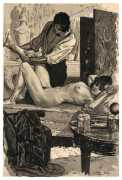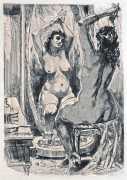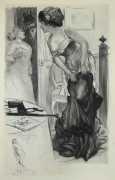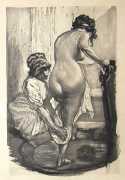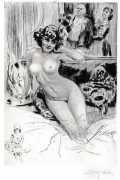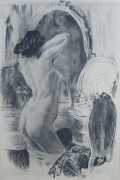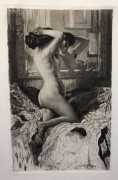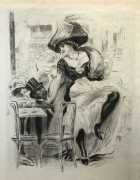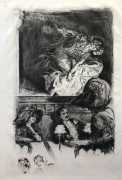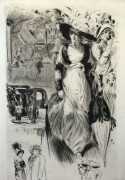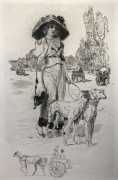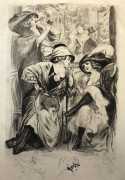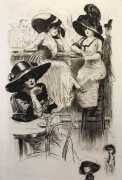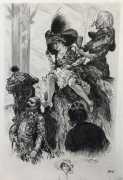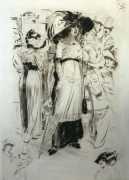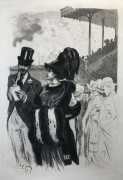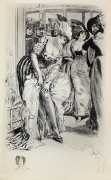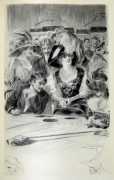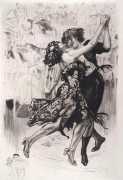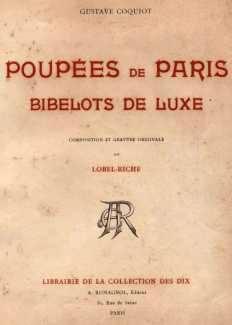 Following the success of Études de filles, two years later the publisher Romagnol commissioned another portfolio of forty Lobel-Riche etchings, this time with an accompanying text by the writer, art critic and collector Gustave Coquiot (1865–1926). The new collection was titled Poupées de Paris (Parisian Dolls), and included more scenes of social life, such as the races and walks in the park, than the earlier portfolio; maybe Lobel-Riche had used up his best nudes, or perhaps Romagnol wanted to reach a wider market.
Following the success of Études de filles, two years later the publisher Romagnol commissioned another portfolio of forty Lobel-Riche etchings, this time with an accompanying text by the writer, art critic and collector Gustave Coquiot (1865–1926). The new collection was titled Poupées de Paris (Parisian Dolls), and included more scenes of social life, such as the races and walks in the park, than the earlier portfolio; maybe Lobel-Riche had used up his best nudes, or perhaps Romagnol wanted to reach a wider market.
Henri Babou, in the introduction to his 1929 study of Lobel-Riche, continues ‘From Études and Poupées the great illustrator was born. Although he went on to enrich his work, it never exceeded the richness, the variety, the sensual and technical beauty of these collections. With his appetite for radiant flesh, his ardour towards pleasure, he observes the shapes, discover the souls, but above enjoys a beautiful body, white as a flower, which enables us to experience time and time again the sharpness of his drawing, the subtlety of his hatching, the velvet of his textures. He almost forces us to run our finger over each engraving, which, like a marble, seems to speak as much by touch as by sight. And what tranquillity in the drawings. See how boldly the artist, sure of his form, encloses the most delicately nuanced nude in a firm line, in an outline which both encapsulates and isolates it from its background like a precious treasure. So much thoroughness in precision, so much precision in freedom, an exaltation of naked flesh which, going beyond the initial sensuality, attains a lyricism that few other engravers achieve.’
Poupées de Paris was published in Romagnol’s Librairie de la Collection des Dix in a limited numbered edition of 300 copies.


